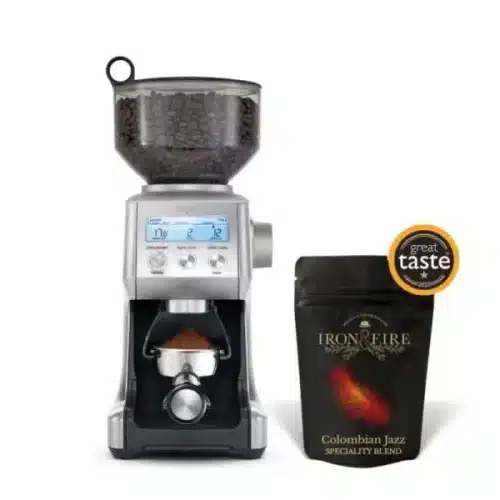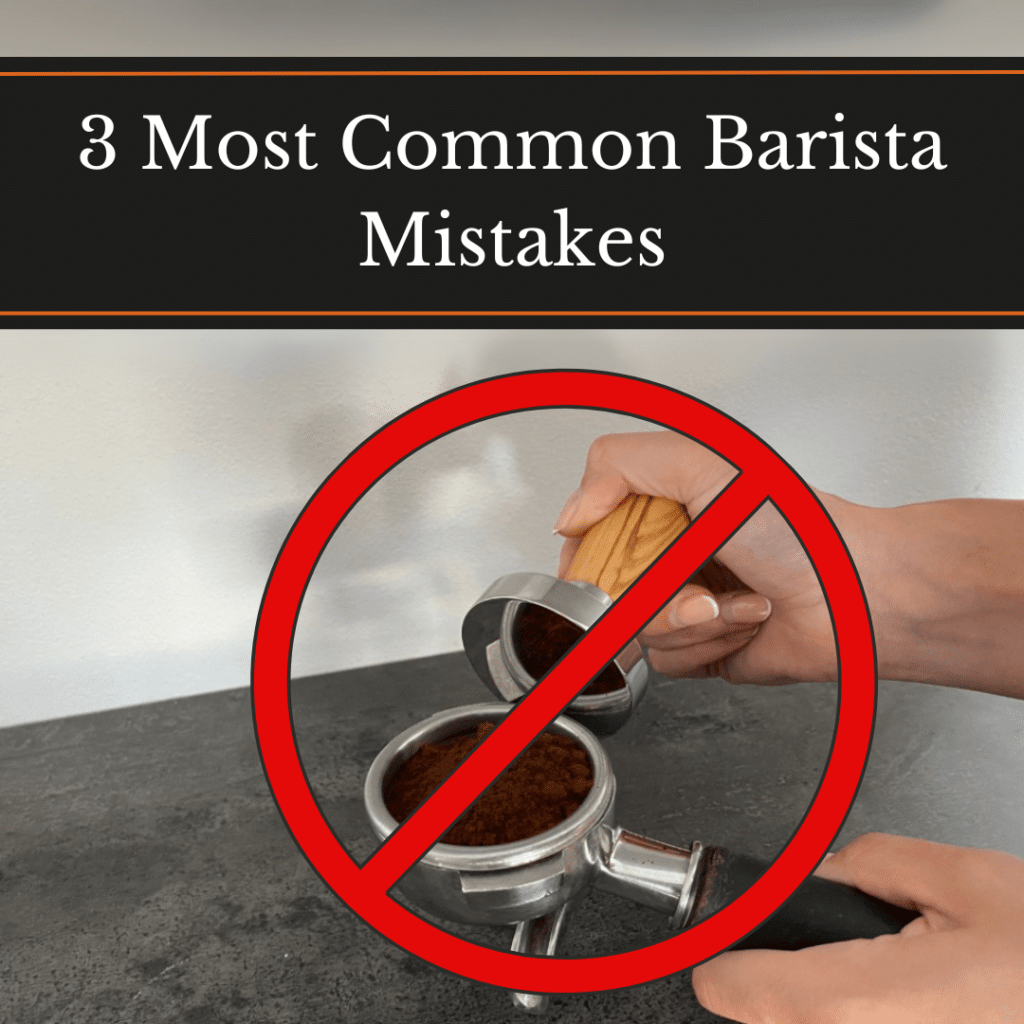- Which is the best sage coffee machine for me?
- What kind of beans should I use?
- What is the best extraction time for an espresso on my Sage?
Which is the best Sage coffee machine?
Here at Iron & Fire we stock, sell and provide courses on using, what we believe are the three best Sage coffee machines to use at home and make the perfect espresso. Which one is best for you depends on what you want from the machine and how involved you want to be in the coffee-making process. We know these machines inside out and like so many others we have amazed at the professional quality of the machines and they coffee which then allow you to produce in your own home.
Sage Barista Touch
This is like having an expert sitting in the corner of your room who can gently guide you through the art of making a fabulous coffee just the way you like it. This bean to cup coffee machine really does simplify the complicated world of making world-class coffee whilst still leaving you in charge. Thanks to a clear and simple touch-screen interface you are guided through the whole process from grinding the beans to frothing your milk for you just how you like it. You can then save your favourite settings and give them a name so that you can go back again and again to your ideal Americano, Latte or espresso. At the same time, you get the joy of being your own barista: you choose your grind, lock in
your portafilter and can work on your latte art.
Sage Barista Pro
You might not be able to save all your favourite settings as you can with the Touch, and like a real barista you get to foam your own milk, but with its LCD interface this barista coffee machine still gives a gentle guiding hand to help you make a professional cup of coffee. It is a bean to cup coffee machine, so like the touch, you buy your fresh roasted beans and pour them into your hopper and with the help of this barista coffee machine you are involved in every step of the process from the grind to being able to foam and texture your own milk. Where the Touch is always at your elbow, the Barista Pro gives you more of the feel of being a real barista: a real pro barista.
Sage Barista Express
Just like the Pro and the Touch, the Sage Barista Express is a bean to cup espresso coffee machine but this one leaves you fully in charge of producing your own perfect coffee every time. Like a real barista you have control of every element of making your coffee just how you like it and just as well as a professional barista. You choose the grind for your beans and tamp them into your portafilter before locking it in and watching your beautiful espresso shot pour, then with the steam-wand you froth your milk to just the right texture and temperature. Then you are free to work your latte-art magic and present a perfect barista coffee with pride.
Don’t forget that not only do we sell these Sage coffee machines, but we can also provide advice and support. We run a variety of coffee and barista courses and at our roastery in the heart of Shrewsbury we even run courses to which you can bring your much-loved Sage coffee machine and learn everything you need to know to mastery being a home barista.
What is the best extraction time for an espresso on the Sage coffee machine?
First let’s answer the question, “what does extraction mean when I am making coffee?”. Extraction is the process of taking the flavour from your coffee beans and putting it into your cup of coffee. In your Sage machine this is done by forcing hot water, under pressure, through freshly ground coffee beans. On your Sage machine this process has two key, related variables: the time the extraction
takes and the coarseness/fineness of the grind.
The two relate to each other but this does not mean that there is a magic grind-v-time ration for extraction which is the perfect ideal.
The extraction determines the taste of the coffee and this is always going to be a matter of personal preference and the taste profile from the roaster will vary slightly between batches of beans even with the same variety of bean and the same roaster. Extraction can be manipulated to make the final drink more or less sweet, floral or bitter.
This area of manipulation though is a narrow one as there is a bottom end, below which a coffee would be seen as ‘under-extracted’ – where too little of the coffee dissolved into the water, leaving it thin and bitter. If the water spends too long travelling through the grounds, however, and dissolves too much of them, the taste would be burnt and unpleasant, or ‘over-extracted’.









